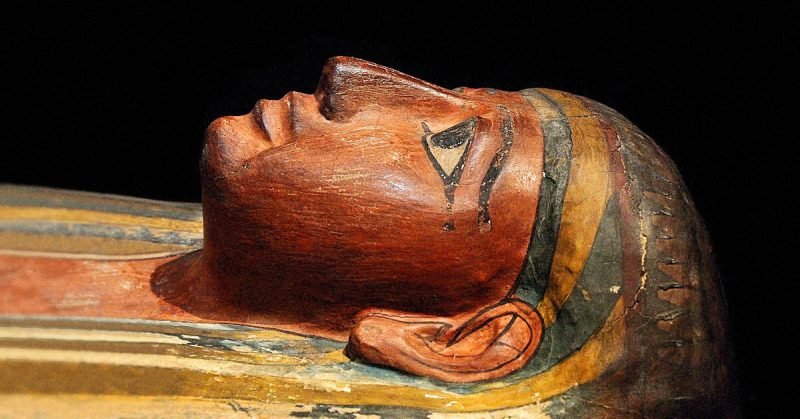The enchantment of antique pictures lies not only in their ancient price but additionally in their particular aesthetic, frequently characterized by heat, and brownish tint. This extraordinary shade, which many humans find nostalgically appealing, is widely talking due to the presence of brown pigments. Understanding the origins, chemistry, and cultural importance of this brown pigment can beautify our appreciation of these photographic treasures.
The Origins of Brown Pigment in Vintage Photos
The Brown Pigment in Vintage Photos is typically a cease result of a photographic technique referred to as sepia firming. This machine, advanced in the nineteenth century, was modified into first used to enhance the longevity of photographic prints. Sepia toning entails converting the steel silver in a black-and-white picture to a greater stable silver sulfide compound. The stop result isn’t a more long-lasting picture but also one with a feature brownish hue.
The Chemistry Behind the Color
Sepia firming is a chemical method that replaces the metallic silver in a Brown Pigment in Vintage Photos with silver sulfide. This transformation is done through a sequence of chemical baths. Initially, a photographic print is bleached to get rid of the silver picture, then dealt with with a toner that consists of a sulfur compound. The sulfur reacts with the silver, forming silver sulfide, which is a super deal greater proof against environmental degradation than metallic silver. This multiplied stability is one purpose why sepia-toned images have survived in better state of affairs than many of their black-and-white contrary numbers.
Historical Context and Cultural Significance
The adoption of sepia toning turns out to be now not simply a technical selection but also a stylistic one. In the late nineteenth and early 20th centuries, photographers and the overall public favored the nice and cozy tones of sepia prints for their aesthetic traits. These prints had been taken into consideration as more innovative and subtle in comparison to the stark evaluation of black-and-white photos.
Moreover, the sepia tone has come to be synonymous with nostalgia and historical authenticity. Today, the Brown Pigment in Vintage Photos conjures up a sense of the past, often used in media and artwork to suggest historical durations or to impart a timeless outstanding to modern pictures. This cultural association has cemented sepia-toned snapshots as icons of an era long long past.
Preservation and Modern Appreciation
Preserving antique snapshots involves information on the chemical techniques that could have an impact on their sturdiness. Sepia-toned Brown Pigment in Vintage Photos, at the same time, is greater durable than black-and-white ones, nonetheless requires careful management and a proper garage. Factors that include mild publicity, humidity, and temperature fluctuations can impact the scenario of these photographs. Digital archiving has emerged as a well-known method for preserving the pictures and the rich information they represent.
In current-day Brown Pigment in Vintage Photos and digital enhancement, the sepia tone remains famous for its nostalgic and innovative attraction. Modern photographers and editors frequently practice sepia filters to virtual pictures to recreate the advent of antique images, paying homage to historical techniques and aesthetics.
The Evolution of Photographic Techniques
The journey of photographic generation from its inception to the sepia-firming era is famous plenty approximately the evolution of photoprotection and aesthetic choices. Early pictures, which include daguerreotypes, were frequently touchy and vulnerable to fading. The introduction of albumen prints, which used egg whites to bind the photographic chemical materials to paper, was a massive development, but those prints have been able to degrade. Sepia firming emerged as a solution, improving the durability and visible attraction of images. This method changed into widely adopted in the course of the late 19th century, marking a pivotal shift in photographic practices.
Technological and Artistic Interplay
The interplay among technological improvements and innovative alternatives performed an important role in the large adoption of sepia firming. As photographers experimented with one-of-a-kind chemical procedures, they discovered that sepia toning no longer only preserved photographs higher but additionally furnished a softer, more aesthetically fascinating opportunity for the excessive assessment of black-and-white images. This stability of sturdiness and splendor made sepia-toned Brown Pigment in Vintage Photos quite good, influencing each expert and beginner photography.
The Impact of Environmental Factors
Environmental factors play a massive role in the preservation of Brown Pigment in Vintage Photos. Understanding the vulnerabilities of sepia-toned images allows us to maintain their integrity through the years. Light exposure, for example, can cause fading and discoloration, even as high humidity tiers can cause mildew increase and exceptional varieties of deterioration. Proper storage, collectively with the usage of archival-exquisite substances and controlling environmental conditions, is essential to keeping those ancient artifacts for destiny generations.
The Psychology of Sepia Toning
The heat tones of sepia Brown Pigment in Vintage Photos evoke an experience of nostalgia and emotional connection. Psychologically, sepia tones are frequently related to warmth, consolation, and the past. This emotional response can enhance the perceived rate and significance of antique photos. Studies in coloration psychology endorse that brown hues can create a feeling of balance and reliability, further contributing to the timeless attraction of sepia-toned Brown Pigment in Vintage Photos.
Modern Applications and Interpretations
In the digital age, the sepia tone remains a famous choice for photographers and picture designers looking to impart an antique look to their paintings. Photo modifying software program programs and apps provide sepia filters, allowing present-day pictures to imitate the advent of historical Brown Pigment in Vintage Photos. This fashion underscores a broader cultural appreciation for the sepia aesthetic, mixing the antique with new creative and significant approaches.
Case Studies of Iconic Sepia Photographs
Examining iconic sepia-toned Brown Pigment in Vintage Photos can offer deeper insights into the historical and cultural importance of this method. For instance, a number of the earliest battle images, family pics, and landscapes had been preserved using sepia toning. Analyzing those images can reveal now not only -the quality of the technical elements of early photographs but also, the social and historical contexts wherein they were created. These case studies highlight how sepia firming helped to seize and preserve moments of high-quality historic importance.
The Science of Sepia Toning
Sepia toning is a charming chemical method that enhances the durability and aesthetic enchantment of pictures. The preliminary step involves bleaching the photograph to cast off its unique metal silver picture. This bleached print is then immersed in a toner answer containing a sulfur compound, generally sodium sulfide. The sulfur reacts with the last silver, changing it into silver sulfide. This compound is much more sturdy than metal silver, resulting in a photograph that is a good deal less vulnerable to fading and discoloration. The chemical response additionally imparts a functional brown hue to the photo, growing the timeless appearance associated with Brown Pigment in Vintage Photos.
Comparative Analysis with Other Photographic Processes
Comparing sepia-toned snapshots with different photographic techniques of the time, which include cyanotypes and platinum prints, highlights the precise blessings. Cyanotypes, diagnosed for their blue tint, were popular for his or her simplicity and fee-effectiveness however lacked the warm temperature and durability of sepia prints. Platinum prints provided great tonal range and balance but were pricey and labor-intensive Sepia toning struck a stability between aesthetic enchantment and realistic durability, making it a preferred desire for plenty of photographers.

Cultural Shifts and Sepia Photography
The cultural context wherein sepia-toned images emerged and flourished is crucial to statistics of their enduring appeal. During Victorian technology, there was a strong emphasis on family, memory, and legacy. Sepia-toned Brown Pigment in Vintage Photos, with their heat and enduring amazing, have extended loved keepsakes, frequently displayed in their family albums and parlors. This cultural cost placed on maintaining memories contributed to the popularity of sepia toning, ensuring that the snapshots were passed down via generations.
FAQs on Brown Pigment in Vintage Photos
Q: What reasons is the Brown Pigment in Vintage Photos?
A: The Brown Pigment in Vintage Photos normally results from a photographic gadget known as sepia firming. This technique results in metallic silver in black-and-white pictures to an extra strong silver sulfide, which imparts a feature brownish hue to the pictures.
Q: Why is sepia toning utilized in Brown Pigment in Vintage Photos?
A: Sepia firming changed into us being ed to beautify the durability and durability of photographs. The technique made photos more proof against fading and discoloration over the years. Additionally, the first-rate and comfortable brown tones were aesthetically appealing and became popular for their artistic capabilities.
Q: How does sepia firming work?
A: Sepia toning entails a chemical way wherein a black-and-white photographic print is bleached to eliminate the silver image, then dealt with with a toner containing a sulfur compound. The sulfur reacts with the closing silver to shape silver sulfide, this is extra solid and offers the image its brown shade.
Q: Are sepia-toned images more lolong-lastinghan black-and-white pics?
A: Yes, sepia-toned snapshots are generally extra long long-lasting black-and-white images because the silver sulfide formed at so long-lasting sepia firming is extra strong and much less at risk of environmental degradation than steel silver.
Q: Can modern-day snapshots receive a sepia tone?
A: Yes, current pics may be given a sepia tone with the usage of virtual enhancing tools and software pro applications Many picture-enhancing programs provide sepia filters that may be implemented to digital photos to replicate the appearance of antique sepia-toned pics.
Q: What elements can affect the maintenance of sepia-toned photographs?
A: Factors along with slight publicity, humidity, temperature fluctuations, and incorrect storage could affect the upkeep of sepia-toned pictures. Proper handling, using archival-first-rate materials, and controlling environmental situations are critical for keeping their situation.
Q: Why do sepia-toned images evoke an enjoyment of nostalgia?
A: Sepia-toned photos evoke an experience of nostalgia due to their warm, brownish hue, which is frequently related to the beyond and ancient authenticity. This color creates an emotional connection and an undying amazing that resonates with traffic.
Q: How can I hold my sepia-toned images?
A: To hold sepia-toned images, preserve them in a fab, dry area far from direct sunlight hours. Use archival-first rate substances which include paper and photo albums. Consider digitizing the pics to create backups and decrease the need for handling the originals.
Conclusion
The Brown Pigment in Vintage Photos, because of the sepia toning manner, combines durability with a timeless aesthetic appeal. This technique, rooted in 19th-century photographic innovation, is no longer a first-rate preserved sn snapshot but is additionally superior in its emotional and historical significance. Today, the nostalgic warmth of sepia tones keeps steering every protected modern-day imaginative practice, ensuring that those photos stay cherished cultural artifacts.

